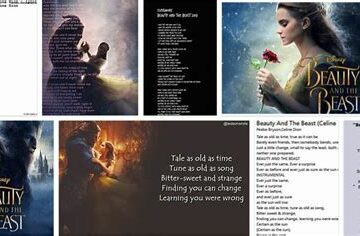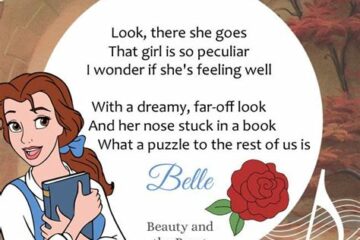
Comparing Disney Princesses: Old Vs New
In the enchanting world of Disney, the portrayal of princesses has transformed dramatically over the decades, reflecting shifting societal values and cultural norms. From the classic elegance of Snow White and Cinderella to the empowered dynamism of Moana and Elsa, Disney princesses have come to symbolize more than just beauty and grace. This article delves into a comprehensive comparison between the old and new generations of Disney princesses, exploring their distinct traits, cultural representations, and how changing gender roles have shaped their narratives. By examining the evolution of these beloved characters, we not only gain insight into Disney’s impact on various generations but also celebrate the enduring legacy of storytelling that continues to inspire and empower audiences around the globe. Join us as we embark on this magical journey through time and transformation in the realm of Disney princesses.
The Evolution Of Disney Princesses: A Historical Overview
The journey of Disney princesses has been one of transformation, reflecting societal changes and evolving expectations over the decades. The concept of a princess in Disney films began with the release of Snow White and the Seven Dwarfs in 1937, which set the standard for princess narratives. Snow White, characterized by innocence and naivety, provides a stark contrast to the more modern portrayals we see today.
In the decades following Snow White, subsequent princesses like Cinderella and Aurora embodied traditional ideals of beauty and virtue, often revolving around themes of love and rescue. They represented the *damsel in distress* archetype that was prevalent in early Disney films, reflecting the norms of the times.
The Disney Renaissance in the late 1980s to the 1990s introduced a shift with characters such as Ariel from *The Little Mermaid* and Belle from *Beauty and the Beast*. These princesses showcased more agency, curiosity, and independence, aligning with the changing perspectives on gender roles and expectations for women in society.
More recently, Disney has continued to diversify its princess lineup, featuring characters like Mulan and Moana who break from traditional molds. They not only challenge gender stereotypes but also bring cultural differences to the forefront, emphasizing strength, bravery, and self-discovery. This evolution showcases Disney’s response to the *globalization* of its audience and the importance of cultural representation.
Throughout the decades, the portrayal of Disney princesses has continually adapted to mirror contemporary values. From passive characters to strong, multifaceted role models, the evolution of these icons highlights the significance of comparing Disney princesses across time, demonstrating how they resonate with different generations and societal change.
Comparing Disney Princesses: Traits Of Old Vs New Characters
When comparing Disney princesses, one of the most striking differences lies in their traits and characteristics. The princesses from the earlier eras often exemplified traditional values and traits that aligned with the societal expectations of their time. For instance, classic characters like Snow White and Cinderella portrayed qualities such as obedience, patience, and an unwavering dedication to family and love. They often found themselves in distressing situations, relying heavily on the help of external forces, whether it be prince charmings or friendly creatures.
In contrast, the more modern Disney princesses exhibit traits that reflect contemporary values and greater agency. Characters such as Moana and Merida embody attributes like bravery, independence, and resilience, often embarking on their adventures without waiting for a prince to rescue them. These newer characters not only take charge of their destinies but also prioritize their personal growth and aspirations over the pursuit of romantic relationships.
This evolution in character traits indicates a broader shift in storytelling, aligning with the changing perspectives of gender roles in society. Where the older Disney princesses may have relied on their beauty and kindness to navigate their challenges, the new generation emphasizes intelligence, courage, and self-discovery as valuable traits.
As we examine these differences in personality traits, it becomes evident that comparing Disney princesses illuminates the evolution of societal norms and expectations, marking a significant transformation in the portrayal of female characters in animated cinema.
Cultural Representation In Disney Princesses Over The Years
The portrayal of culture in Disney princess movies has undergone significant transformation since the inception of the franchise. In the early films, such as Snow White and the Seven Dwarfs and Cinderella, the characters and settings often reflected a Eurocentric perspective, predominantly shaping the princesses’ identities and storylines. These early representations lacked diversity and did not authentically reflect the variegated backgrounds of princess figures from different cultures.
As we move into the late 20th and early 21st centuries, Disney began to broaden its horizons. The introduction of characters like Jasmine from Aladdin, Mulan from Mulan, and Tiana from The Princess and the Frog marked a turning point in the realm of cultural representation. These princesses not only celebrated their respective cultures but also brought forward unique narratives that resonated with diverse audiences. For example, Mulan’s story emphasizes themes of bravery and honor, while Tiana’s journey showcases hard work and perseverance, both of which are deeply rooted in their cultural backgrounds.
Moreover, contemporary films have pushed the envelope even further. Moana, released in 2016, stands as a testament to Disney’s commitment to presenting authentic cultural narratives. Moana’s character connects with her Polynesian heritage through her journey, values, and the significance of her cultural identity, demonstrating a respectful engagement with mythology and tradition.
While the evolution of these characters has received recognition, it’s essential to acknowledge ongoing challenges surrounding comparing Disney princesses. Critiques often focus on the commercialization of culture and the risk of stereotyping. As Disney continues to introduce new princesses, there is a growing expectation for thoughtful representations that honor and accurately reflect the cultures they portray.
The journey of cultural representation in Disney princess films is a vivid illustration of the broader societal changes regarding diversity and inclusion. With each generation of princesses, Disney approaches the task of storytelling with a more informed lens, fostering appreciation for various cultures while inspiring the next wave of audiences.
Changing Gender Roles In Disney Princesses: A Comparative Analysis
The portrayal of gender roles in Disney princess movies has evolved significantly over the years. Initially, many of the classic princesses, such as Snow White and Cinderella, embodied traditional feminine ideals, characterized by passive behaviors, an emphasis on beauty, and a strong focus on romantic relationships. These characters often found their identities and worth through their relationships with male protagonists, reinforcing the notion that their ultimate goal was to find love.
In contrast, modern Disney princesses like Moana, Elsa, and Merida demonstrate a marked shift in representation. These characters are depicted as strong, independent, and complex individuals who actively pursue their own goals and ambitions, often prioritizing their family, personal growth, and community over romantic entanglements. This change reflects a broader societal shift towards recognizing and embracing female empowerment and individuality.
When comparing Disney princesses from different eras, it’s interesting to note how the narratives have shifted from those centered around finding a prince to stories emphasizing personal journeys and self-discovery. For example, Merida defies societal expectations and challenges traditional gender roles, prioritizing her own desires over prescribed paths, while Moana embarks on a daring adventure to save her people, illustrating her courage and leadership.
This transformation in storytelling not only mirrors changes in cultural attitudes towards gender roles but also serves to inspire new generations of girls, encouraging them to aspire to be more than just a princess waiting to be saved. By reshaping the narratives, Disney is not only reflecting the changing dynamics of gender roles in society but also paving the way for a more inclusive and empowering portrayal of women in media.
Impact Of Disney Princesses On Generations: Old Vs New
The impact of Disney princesses on generations has been profound and multifaceted, influencing societal norms and individual self-perception. Traditionally, the older Disney princesses, like Snow White and Cinderella, represented ideals of beauty and gentleness that resonated with the cultural attitudes of their times. These characters often embodied subservience, waiting for their prince to rescue them, which reinforced certain traditional gender roles.
In contrast, newer princesses such as Moana and Elsa have shifted the narrative, portraying characters who are strong-willed, independent, and self-reliant. These characters encourage young audiences to prioritize their own dreams and values over romantic pursuits. This significant change reflects a broader societal evolution, where empowerment and personal agency are highlighted.
The comparison of Disney princesses across generations can also be seen in how they inspire both boys and girls. The older princesses primarily catered to a female audience, fostering a model of femininity focused on beauty and submission. However, newer characters, through their varied stories, promote messages of perseverance, friendship, and leadership for all children, thus expanding their appeal.
Moreover, the reception of these characters can elicit strong emotions and foster a sense of community among fans. Fans often reflect on how these characters shaped their childhood ideals and aspirations, further solidifying the legacy of Disney princesses across generations.
As we continue comparing Disney princesses, it’s essential to recognize how they not only entertain but also serve as a lens through which we can examine changing societal norms and cultural values. The impact of these characters is enduring, shaping the identities of young audiences and encouraging them to embrace who they are, regardless of the era in which they grew up.
Top 10 Disney Characters You Didn’t Know About
December 30, 2024A Deep Dive Into Disney Princesses And Their Stories
December 29, 2024The Meaning Behind Beauty And Beast Lyrics
December 29, 2024Why Beauty And The Beast Is A Timeless Disney Classic
December 29, 2024The Role Of Disney Princesses In Modern Culture
December 29, 2024Exploring The Themes In Beauty And The Beast Lyrics
December 28, 2024
Leave a reply Cancel reply
Recommended
-
Beauty And The Beast Lyrics Original
August 18, 2023 -
The Illusions of Beauty and the Beast Jr Dating Song
October 6, 2021 -
Rediscovering Classic Disney Characters In New Media
December 19, 2024









